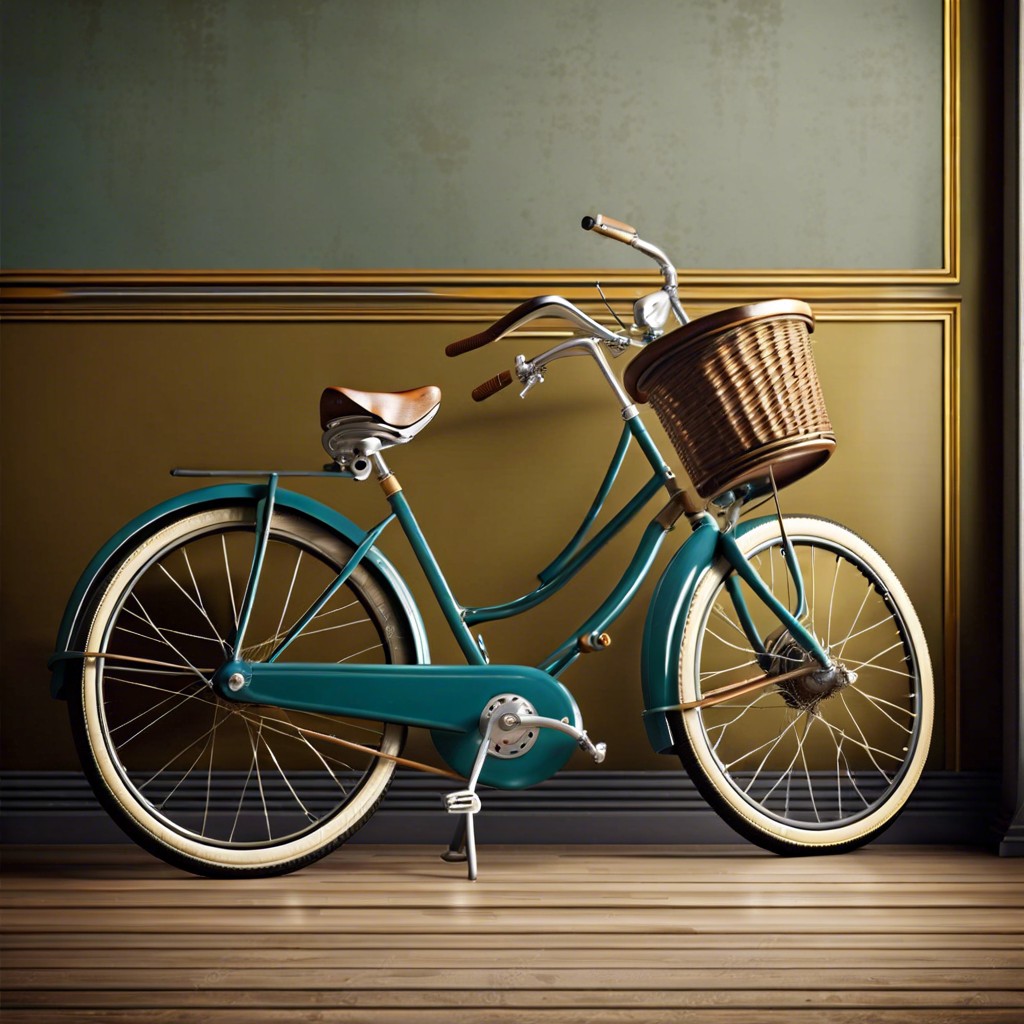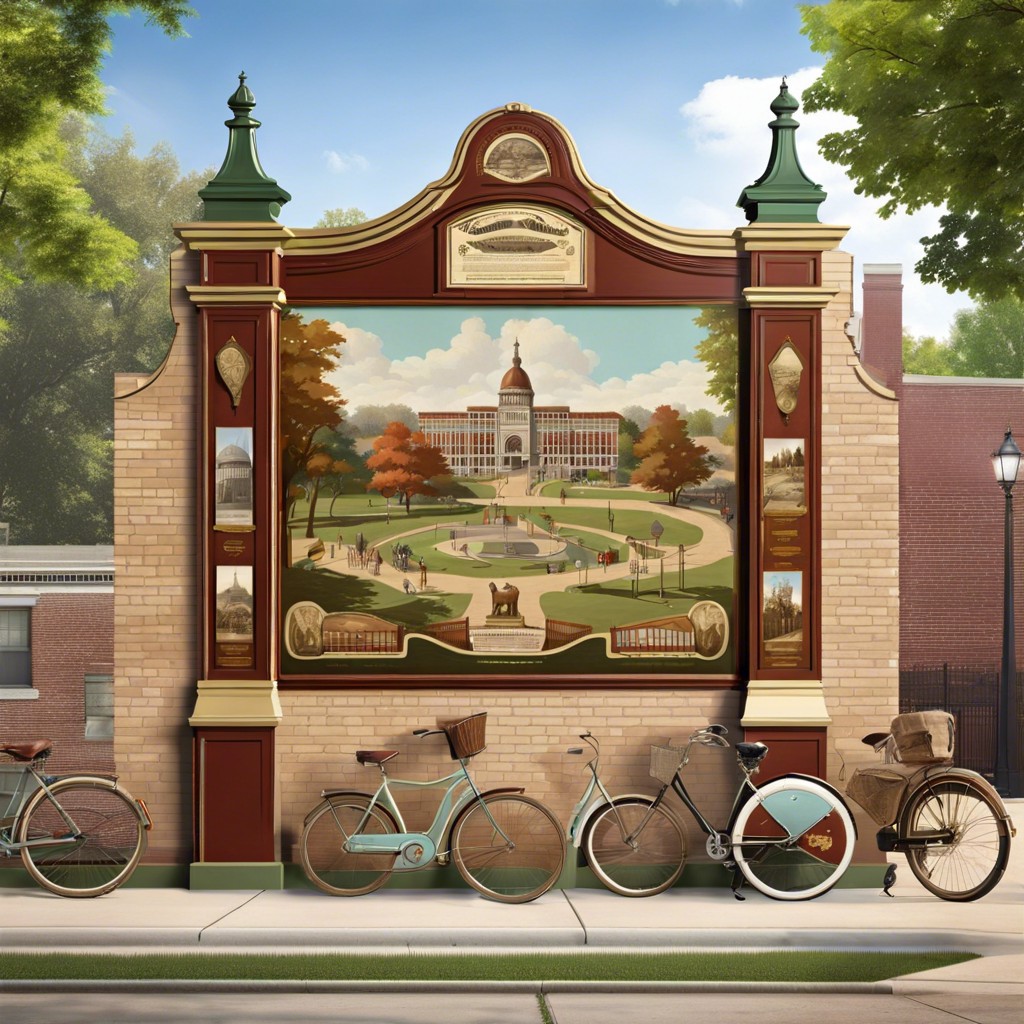Last updated on
Discover how vintage bicycles continue to captivate enthusiasts, highlighting their history, unique characteristics, and the current revival of interest in these timeless two-wheelers.
Key takeaways:
- Vintage bicycles evolved from penny-farthings to mountain bikes.
- Factors that make a vintage bike desirable: manufacturer, age, condition, rarity, provenance.
- Maintain vintage bikes with regular cleaning, lubrication, tyre care, and component tightening.
- Restoring vintage bikes: original parts add value, reproductions offer availability and affordability.
- Buy vintage bicycles at auctions, online platforms, local shops, and trusted sellers.
Evolution of Vintage Bicycles: Key Milestones From 1890s to 1980s

The 1890s ushered in the safety bicycle, revolutionizing personal transport with its rear chain-driven wheel and uniformly sized wheels. This period marked the decline of the towering penny-farthings, much to the relief of those without acrobatic skills.
By the 1930s, balloon tires were all the rage, cushioning riders from the omnipresent cobblestone streets. These were also the glory days of the streamlined art deco bicycles, which looked as fast as they felt.
Post-World War II, the 1950s saw a surge in bicycle demand as materials became widely available. Enter the era of the Schwinn Phantom, a bike that combined style with utility, featuring built-in lights and hefty fenders that could withstand a small apocalypse.
The 1970s rolled in with the ten-speed boom, mirroring the era’s fascination with speed and efficiency. These bikes featured derailleur gears, offering riders a smoother transition among various speeds and terrains.
By the 1980s, mountain bikes had taken the world by storm. Sturdier frames and more robust wheels allowed thrill-seekers and fitness enthusiasts alike to tackle tougher terrains beyond the reach of their skinny-tired predecessors.
Identifying Collectible Vintage Bicycles: What Makes a Bike Desirable?

When assessing the collectibility of a vintage bicycle, several factors come into play. First, consider the manufacturer and model. Bikes from renowned makers like Schwinn or Raleigh, especially those with limited production runs, often carry higher value.
Next, examine the bike’s age and historical significance. Models that represent technological innovations, or those linked to significant cycling events, tend to be more coveted.
Condition is also crucial; a bicycle that retains its original parts and paint will generally attract more interest than one that’s been heavily modified or poorly restored.
Rarity can further enhance desirability. A model seldom seen on the market or with unique features, such as unusual frame designs or bespoke components, can be particularly appealing to collectors and enthusiasts.
Lastly, provenance can add a layer of value, especially if the bicycle was owned by someone of note or used in a historically significant context.
Maintenance Tips for Vintage Bicycles: Preserving Old School Charm
Maintaining a vintage bicycle requires balancing authenticity with practicality. Start with regular cleaning to prevent rust; soap and water work wonders, but avoid harsh chemicals that can damage old paint and metal finishes. Use a soft brush to get into those quirky, hard-to-reach nooks and crannies.
Lubrication is your best friend, especially for bikes that still take to the road. Apply oil to the chain, gears, and moving parts to keep everything running smoother than a well-buttered toast. Keep it period-appropriate if possible, but modern lubricants often offer better protection and longevity.
Tyre care is crucial, as cracked or worn tires not only look bad but are also unsafe. If replacement is necessary, aim for period-look tires to maintain the vintage vibe—often available through specialty suppliers.
Lastly, address any loose components by tightening screws and bolts. Given the age of these bikes, avoid over-tightening to prevent stripping or breaking the often irreplaceable parts. Regular checks and minor adjustments go a long way in preserving the function and charm of your vintage bicycle.
Restoration Challenges: Original Parts Vs. Reproductions
Navigating the restoration journey of a vintage bicycle can feel like being a detective in a whodunnit – thrilling yet perplexing! Opting for original parts yields authenticity and can increase the value of your bicycle. However, these parts can be as elusive as a ghost in a haunted mansion, not to mention possibly more expensive than your last vacation.
On the flip side, reproductions offer easy availability and often come with fewer curse words uttered during installation. Yet, they might detract from the historical essence and overall value of the bike. Always consider the future of your bicycle – is it a showpiece, a Sunday rider, or a museum-bound gem?
In this high-stakes game of ‘Antique or Replica?’, the winning move depends on your goals. If maintaining historical integrity is your aim, the original parts are your best bet, albeit with potentially higher costs and longer search times. For those whose endgame focuses more on usability and less on authenticity, reproductions provide a practical and budget-friendly alternative. Choose wisely, or you might find yourself pedaling uphill!
Where to Buy Vintage Bicycles: Auctions, Online Platforms, and Local Shops
Venturing into the world of auctions can be akin to a treasure hunt, offering the thrill of bidding wars and the potential to snag a rare gem at a bargain price. For those who prefer a more predictable path, online platforms such as eBay, Etsy, and dedicated vintage bicycle forums provide a vast array of options with detailed photographs and descriptions. These sites allow you to search broadly or zero in on specific models and conditions.
Still feeling a bit old school? Local antique shops, flea markets, and garage sales often hide vintage bicycles in plain sight. These spots provide the added benefit of seeing and touching the bike before buying, plus the joy of immediate gratification when you find the right one. Some local bike shops also carry or can point you to someone who specializes in vintage models. Always remember to chat with the seller for valuable insights and possibly a better deal!




